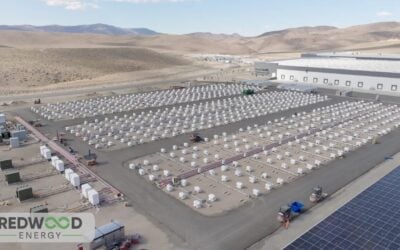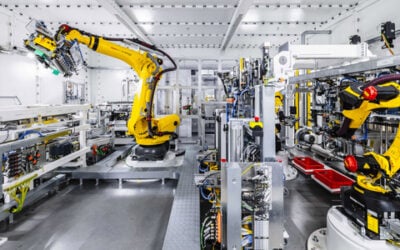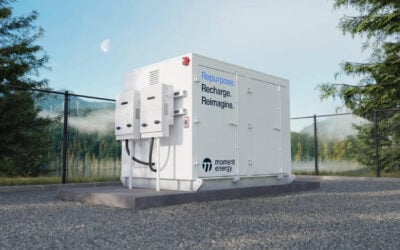
The US battery storage market is struggling to adapt to rising raw materials costs and has reached a “crisis point”, Energy-Storage.news has heard.
The steep rise in the cost of lithium carbonate in particular means that it’s likely the industry will see a slowdown in new projects in 2022 and possibly next year, Adam Walters, a specialist lawyer with Stoel Rives, said.
Enjoy 12 months of exclusive analysis
- Regular insight and analysis of the industry’s biggest developments
- In-depth interviews with the industry’s leading figures
- Annual digital subscription to the PV Tech Power journal
- Discounts on Solar Media’s portfolio of events, in-person and virtual
“We’re at the point where batteries are going to be uneconomical in the short term for a lot of projects. The economics are not going to stack because those raw materials prices being so much extremely higher, translates to 20% to 30% higher battery prices overall,” Walters said in an interview.
Walters provides legal counsel as a transactional, commercial and project lawyer to clients in the renewable energy and battery storage space, among others, with previous experience in-house at Tesla and First Solar.
Cobalt and other raw materials important for lithium-ion battery production have also gone up in price, but it is lithium carbonate prices, which have “quintupled since last August,” that present a massive issue, he said.
From about RMB100,000 (US$15,000) per metric tonne in China in the first half of 2022, prices are at about RMB500 (US$78,000). Prices doubled in the last two months and double two months before that. Walters said the situation is going to be a “massive break on the industry”.
“I think it’ll be a temporary break but it’s significant enough. These are runaway prices for raw materials,” the lawyer said.
Top tier battery suppliers are now indexing their pricing to the spot market, with those prices being moved on to developers. That means firm pricing offers are very, very short-term and if vendors’ terms aren’t agreed to and deals signed off with five to 10 days, buyers lose that pricing and have to renegotiate.
“What we’re going to see is fewer battery projects getting installed this year, and maybe even into 2023 on this basis. And you may be seeing some developers waiting out pricing to go down to a level that is more consistent with what we have seen up until six, seven months ago.”
According to the lawyer, three months ago, the situation was starting to get a little worrying, but now a “crisis point” has been reached.
The industry has become used to seeing consistent declines in the cost of battery storage, which has been seen to fall even faster than the costs of solar PV or wind before 2021. In early 2021, McKinsey associate partner Bram Smeets told Energy-Storage.news the importance of continuously falling battery storage prices in enabling rapid global decarbonisation.
It is not just that the prices have stopped falling for the first time in years, but also the introduction of uncertainty to financing that could hurt or slow down the industry.
Pricing volatility ‘making it difficult to convince banks’
Last August, Walters said in an article contributed to our quarterly journal PV Tech Power Vol.27 that energy storage equipment procurement in the US remains a chaotic endeavour, reminiscent of a ‘Wild West’.
Ensuring supply chain robustness, making sure customers understand their warranty terms and navigating the different regional markets for energy storage were among the challenges the sector already faced at that stage, he said at the time.
Since then, the raw material pricing issue, driven largely by the huge demand for lithium batteries from the electric vehicle (EV) industry, has come to dominate the agenda. Increases in shipping and other costs stemming largely from the pandemic are having an impact too, although these are being felt in a broad number of other industries too.
It’s too early to say what the impact will be, with prices having gone up so quickly and so dramatically, while a lot of the larger battery energy storage system (BESS) developers will have tried to lock in their battery order volumes 12 months to 18 months in advance.
Walters said this means that with batteries already purchased, projects scheduled for completion this year might not be affected. But with suppliers “substantially raising their prices,” it’s likely we will see impacts “very soon for projects with 2023 and 2024 completion dates”.
His colleague at Stoel Rives, Morten Lund, works further downstream in the industry, engaging with developers. Lund said that the unprecedented volatility of pricing is making it “difficult for developers to try [and] convince a bank not to worry”.
“A little bit of variability is okay, but the more variability we have, the more difficult it is for us to convince banks,” Lund said.
That said, the impact is likely to be strongest on the solar-plus-storage market, according to Morten Lund. Standalone energy storage projects are mostly financed from the balance sheet and not through project financing, making it a risk that the developer can take on.
On the other hand many solar-plus-storage projects are project financed. In those cases, a big increase in the volatility of the energy storage costs — which present a significant portion of the total project costs — could affect ability to get financing, Lund said.
At the Energy Storage Summit 2022, hosted in London by our publisher Solar Media in February, Giuseppe Artizzu, CEO for energy storage at storage and emobility solutions provider NHOA said the rise in lithium carbonate pricing has even closed the price differential between lithium iron phosphate (LFP) and nickel manganese cobalt (NMC) cells.
However, Artizzu said that while supply chain challenges were perhaps added to by energy storage markets around the world taking off faster than expected, the situation “represents an opportunity to grow”.
“The supply chain will come out stronger because of it,” Artizzu said.






